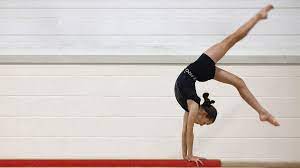Gymnastics for kids plays a powerful role in supporting physical, emotional, cognitive, and social development during the early years. More than just a fun activity, gymnastics gives children a framework for structured movement, goal setting, and confidence building—all while developing balance, strength, and coordination.
This article explores how gymnastics encourages healthy child development across key growth areas, offering parents valuable insights into why it’s one of the most beneficial sports for kids.
What Are the Developmental Benefits of Gymnastics for Children?
Gymnastics offers a unique combination of physical and mental challenges, which makes it an effective tool for holistic growth. Here’s how it helps shape well-rounded children:
- Physical Development: Improves balance, strength, flexibility, and motor skills
- Emotional Growth: Builds resilience, confidence, and independence
- Cognitive Skills: Enhances focus, discipline, and memory retention
- Social Skills: Teaches teamwork, patience, and communication
The blend of individual effort and group interaction makes gymnastics an ideal environment for children to thrive across multiple areas of development.
How Does Gymnastics Build Strength and Coordination in Kids?
Gymnastics requires kids to move their bodies in dynamic ways—from tumbling and balancing to climbing and stretching. These movements stimulate neuromuscular development and improve:
- Gross motor skills: through large movements like jumping, running, and rolling
- Fine motor control: via grip strength, controlled landings, and apparatus use
- Postural control and alignment: thanks to core-based exercises like planks and bridges
A child who trains in gymnastics is often more physically confident in other sports and everyday tasks such as climbing stairs, playing in the park, or riding a bike.
What Emotional Growth Can Children Gain from Gymnastics?
Gymnastics teaches kids to face challenges, deal with setbacks, and try again—valuable emotional skills for school and life. Learning new techniques or performing in front of others can feel intimidating, but achieving a skill after repeated practice fuels self-belief.
Children often internalise three important traits through gymnastics:
- Resilience – Trying again after a fall or failure
- Confidence – Celebrating small wins and personal bests
- Independence – Tackling routines without direct help
The principle of Consistency—one of Robert Cialdini’s persuasion tools—is subtly reinforced in gymnastics. Kids who practise regularly develop a mindset of showing up, sticking with a goal, and building on progress session by session.
How Does Gymnastics Support Cognitive Development?
The sport involves more mental effort than many realise. Gymnasts must remember routines, respond to instructions, sequence movements, and evaluate risk in real-time.
Cognitive benefits include:
- Better focus and attention span: Kids follow multi-step instructions and routines
- Spatial awareness: Understanding body orientation helps with safety and strategy
- Working memory: Remembering complex patterns builds mental agility
This makes gymnastics especially useful for young children as they develop pre-academic and classroom readiness skills like following directions and managing transitions.
Can Gymnastics Help With Social Development?
Yes—and often more than parents expect. While gymnastics is largely an individual sport, classes are structured in a group format. Children wait their turn, watch others, follow rules, and cheer on their teammates.
These interactions strengthen:
- Empathy and cooperation: Especially when kids are encouraged to support peers
- Listening and verbal communication: Following coaches and asking for help
- Social confidence: Participating in group activities and performing in showcases
Gymnastics also suits children who are shy or have trouble integrating into traditional team sports. It provides space for individual growth, with the gentle reinforcement of shared progress in a group setting.
At What Age Should Kids Start Gymnastics?
Many centres offer programs starting from toddler age (18 months to 2 years), with parent-assisted classes focusing on movement play. From around 4 years, children can participate in structured, coach-led sessions.
Starting young allows kids to build foundational movement patterns and body confidence early, though it’s never “too late” to begin. Even school-aged children benefit from beginning gymnastics, especially if they’ve shown an interest in movement or need help building self-esteem.
How to Choose the Right Gymnastics Program for Your Child?
When choosing a gymnastics program, look for:
- Accredited coaches with experience working with children
- Safe, well-maintained equipment and an emphasis on injury prevention
- Class sizes that allow for individual attention
- Programs that align with your child’s age, interests, and ability level
It’s also important that the environment promotes fun and learning equally—kids thrive best when they’re encouraged, not pressured.
FAQs
Is gymnastics good for kids who are shy?
Yes. Gymnastics helps shy kids build confidence through individual achievement in a supportive group setting. Many shy children grow more social after a term or two.
Will gymnastics interfere with school?
Not at all. In fact, gymnastics can improve focus, time management, and discipline—skills that support school performance.
Is gymnastics safe for young children?
When taught by qualified instructors with proper equipment and class structure, gymnastics is very safe. Kids learn how to fall, land, and move safely, which carries into other activities.
Final Thoughts: Why Gymnastics for Kids Is Worth Considering
Gymnastics offers a developmental head-start for children. It builds strong bodies, agile minds, and confident spirits—without requiring elite performance or competition. Whether your child wants to cartwheel, climb, or just burn some energy, gymnastics gives them space to grow.
And for parents seeking flexible options, many centres now offer age-appropriate classes with casual attendance or structured pathways. If you’re looking to improve your child’s coordination and confidence, you might explore a kids fitness program that balances movement and learning at once.

